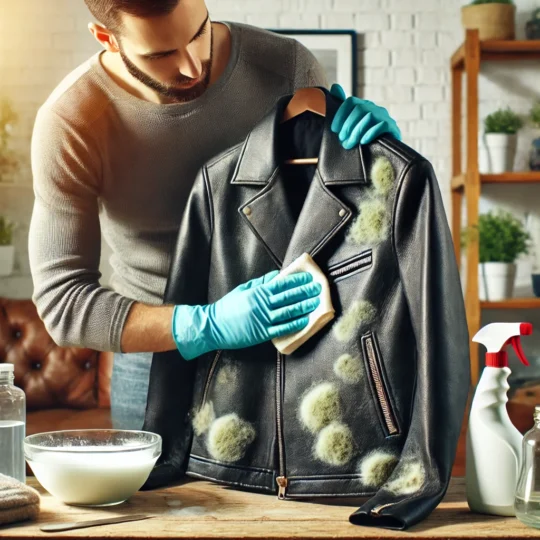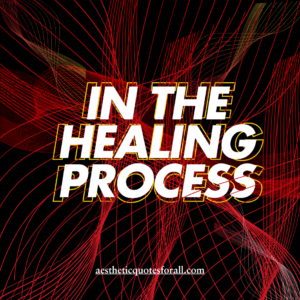Why Mold Grows on Leather
Leather is a natural substance that absorbs moisture. When stored in humid conditions, leather can become a breeding ground for mold and mildew, which feed on organic components. This growth is not only ugly, but it can also weaken leather fibers if not handled.
Identifying Mold on Your Leather Jacket
Mold on leather often appears as white, grey, or green spots and may have a musty odor. It is critical to detect mold early to remove it before it causes permanent damage. Here’s how to check your jacket for mold.
- Check Visible Areas: Examine the jacket’s outside surfaces for discoloration or spots.
- Inspect Hidden Spots: Look inside pockets, under collars, and seams for mold.
- Smell Test: Mold gives off a distinctive musty odor; if your jacket has an unusual smell, it may have mold.
Safety Precautions Before You Begin
Mold removal can release spores into the air, causing allergic responses or respiratory issues. Take these precautions:
- Wear Protective Gear: Use gloves, a mask, and eye protection to avoid direct contact with mold spores.
- Work in a Ventilated Area: Open windows or work outside to prevent mold spores from contaminating indoor air.
- Test on a Small Area. First: Before using any cleaning solution on your entire jacket, try it in a hidden area to guarantee no discoloration or damage.
Step-by-Step Guide to Remove Mold from Leather Jacket
Let’s look at some successful mold removal procedures for leather jackets, each with a distinct level of severity.
1. Brush Off Loose Mold
Begin by removing any loose mold particles with a soft-bristled brush or a clean cloth. Be careful not to press too firmly, as leather might scratch. Discard the towel or brush immediately after usage.
2. Wipe with a Vinegar Solution
Vinegar is a natural antifungal that can kill mold spores on contact. Here’s how to use it:
- Mix the Solution: Combine equal parts white vinegar and water in a bowl.
- Dampen a Cloth: Moisten a clean, lint-free cloth with the solution and wring out any excess.
- Wipe Down the Jacket: Gently wipe the affected areas in circular motions, taking care not to soak the leather.
- Air Dry: Allow the jacket to air dry in a well-ventilated area. Avoid direct sunlight, as it may dry out or discolor the leather.
3. Use a Leather Cleaner
Leather cleaners are designed to remove stains without hurting the leather. These chemicals can be especially useful for removing persistent mold areas.
- Choose a Leather Cleaner: Look for a cleaner made specifically for mold and mildew.
- Apply according to the instructions: Because each cleaner differs somewhat, pay close attention to the directions.
- Buff the Leather: Once cleaned, use a dry, soft towel to restore the leather’s natural shine.
4. Rubbing Alcohol Solution for Persistent Mold
Rubbing alcohol is good against more extensive mold growth. Here is how you can use it safely:
- Prepare the solution: Mix one part rubbing alcohol and one part water.
- Dampen the Cloth: Dip a cloth into the solution, drain off any extra moisture, and gently wipe the moldy spots.
- Allow to Air Dry: Place the jacket in a shaded, well-ventilated area to dry.
5. Apply Leather Conditioner
Cleaning leather can occasionally remove its natural oils, therefore it’s important to recondition it afterwards.
- Select a conditioner: To nurture and protect the jacket, apply a high-quality leather conditioner.
- Apply evenly: Massage a tiny amount of conditioner into the leather in circular strokes.
- Buff to Finish: Use a soft cloth to give your jacket a polished appearance.
Mold Prevention Tips for Leather Jackets
After cleaning your leather jacket, use these preventative methods to maintain it mold-free:
- Keep your jacket in a dry place: If you live in a humid environment, consider installing a dehumidifier in your closet.
- Use a Breathable Garment Bag: Avoid plastic coverings, which can trap moisture. Choose a cotton clothes bag that permits air circulation.
- Condition Regularly: Conditioning leather every few months helps to keep its moisture balance, lowering the risk of mold.
- Allow Airflow: Keep leather jackets well-ventilated to prevent moisture buildup.
Frequently Asked Questions
- Can I use baking soda to remove mold from the leather?
While baking soda works well for odor control, it is too abrasive for leather and may ruin the finish. Use softer cleaning chemicals such as vinegar or rubbing alcohol.
- Is it OK to use bleach to kill mold on leather?
No, bleach is very strong on leather and can cause staining, cracking, and irreversible damage. Use leather-friendly mold removal procedures.
- What if the Mold Keeps Returning?
Persistent mold could suggest an underlying moisture problem. Check the storage place for humidity issues, and consider storing your jacket with silica gel packets or in a climate-controlled environment.
- Should I dry my leather jacket in the sun?
Avoid direct sunlight, which can dry and discolor the leather. Instead, dry your jacket in a shaded, well-ventilated area.
Final thoughts
Removing mold from a leather jacket takes some time and care, but the results are well worth it. Gentle cleaning treatments such as vinegar and rubbing alcohol will effectively cleanse and preserve your jacket against future mold growth. Whether you own a classic brown leather jacket or a bold red leather jacket, regular maintenance and correct storage are essential for keeping your leather in top shape for years to come.
By following this technique, you may restore your leather jacket to its original condition and wear it with confidence. If the mold problem persists or you are unclear about any of the cleaning steps, seek assistance from a leather care professional.



